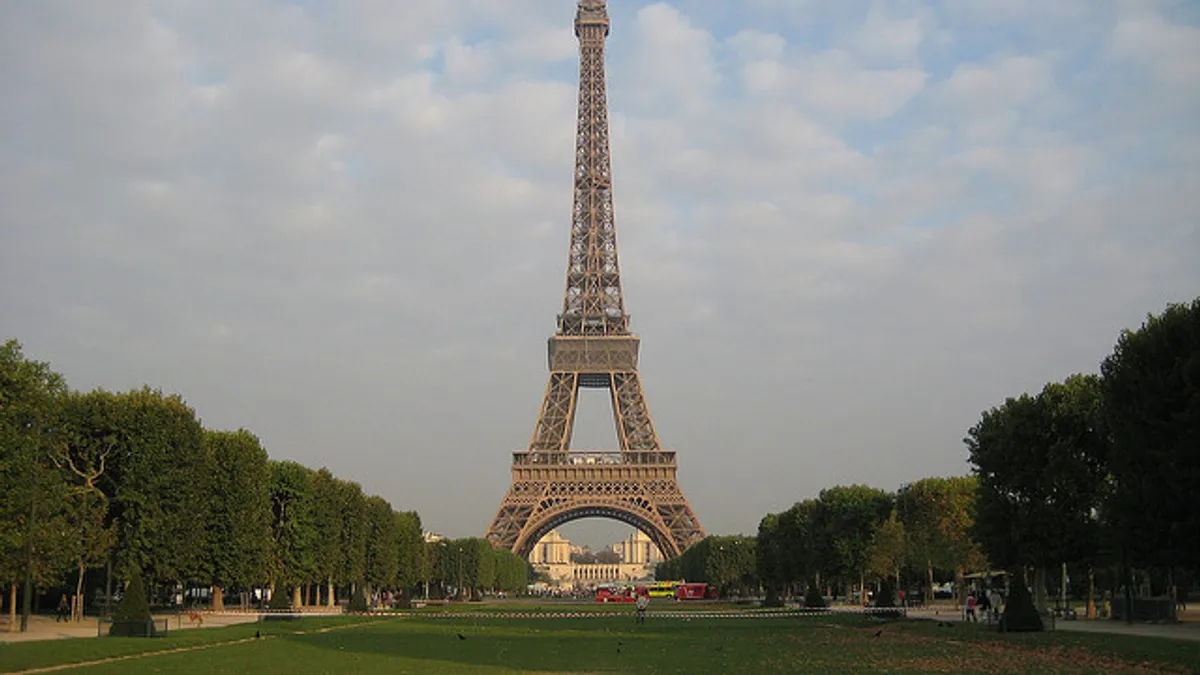Dive Brief:
- Autodesk and the city of Paris announced a partnership that involves removing aspects of the Eiffel Tower and the Champ de Mars using BIM. The renovations should be complete in time for the 2024 Olympics, reported Engineering.com.
- Autodesk, which is the sole technology partner in using BIM to renovate the landmark, has started laser scanning and modeling the area into a BIM environment. It then will provide a 3-D model to four architects who will submit their BIM proposals by the first quarter of 2019 before one architect is selected.
- Not only will BIM help coordinate the renovation project's complex schedules and budgets, but Paris officials also hope the simulation will help them better understand the effects of a terror attack, especially in light of the tragic attack on the city in 2015. In addition, BIM may help prepare the city for potential extreme flooding, which climate scientists say global warming nearly doubles the odds of.
Dive Insight:
International projects can offer myriad lessons for the entire industry. Last year at Autodesk University, the first place winners in each of the AEC Excellence Awards categories — infrastructure, building, construction and sustainability — hailed from countries outside of the U.S. The winners included the Mexico City Airport, which is in the midst of a $4 billion terminal project, and the Istanbul airport, which will be 250 million square feet and accommodate 200 million passengers per year.
The planned Eiffel Tower renovation is just one project Paris, which also is hosting the 2025 Universal Exhibition and 2026 Rugby World Cup, is undertaking in preparation for hosting the Olympic Games. The city claims it has 95% of the needed infrastructure already built. And boosting its already strong public transit system will be the Grand Paris Express, a massive metro system expansion. Despite its target completion date of 2030, the progress by 2024 will positively impact Olympic game participants and visitors.
In terms of BIM, Allied Market Research projects the BIM industry will hit a compound annual growth rate of 21.6% between 2016 and 2022, earning $11.7 billion by the end of that timeframe. The technology has been around since the 1980s, helping some construction firms realize up to 20% cost savings.
Even so, BIM mandates are not yet commonplace in the U.S. despite experts claims that it could save significant money. The United Kingdom, Russia and some other European countries are in various stages of implementing standards and mandates for companies that do business with their governments.












